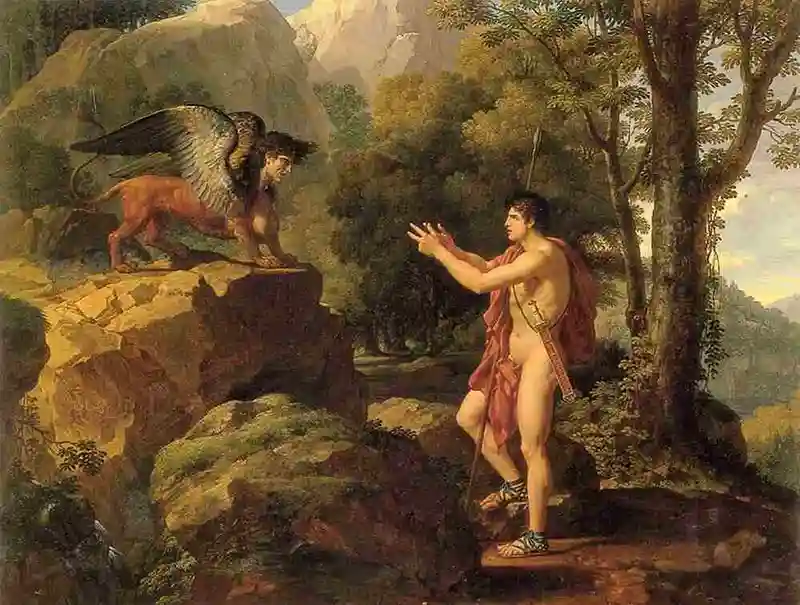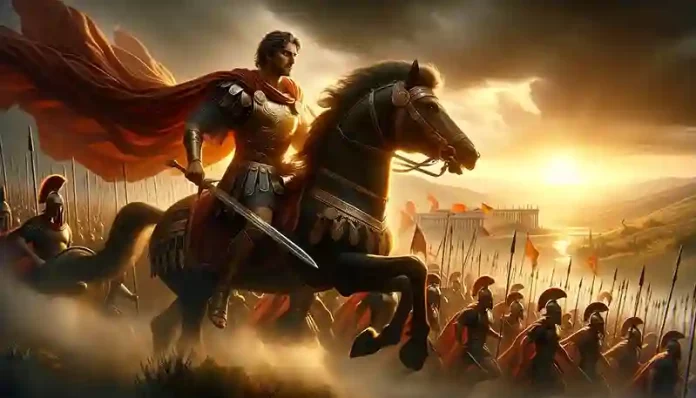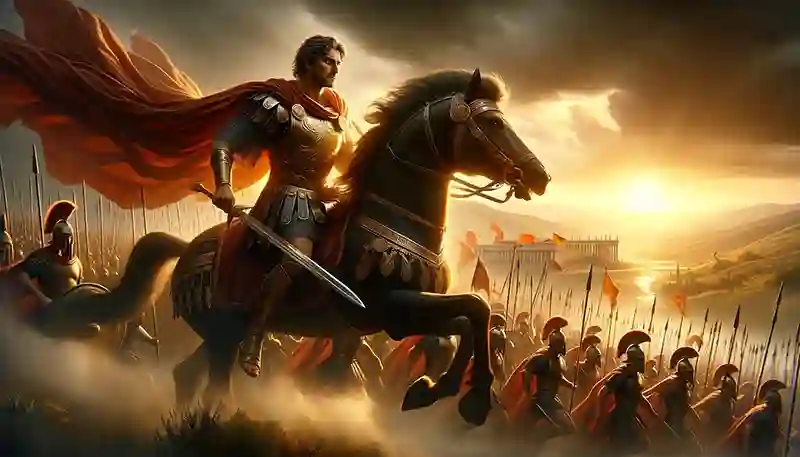The Sphinx, a creature shrouded in mystery and legend, has captivated human imagination for centuries. Originating from Greek mythology, this enigmatic being has sparked countless tales and theories. But what exactly is the Sphinx in Greek mythology? In this article, we delve into the origins, tales, and significance of the Sphinx, seeking to uncover the truth behind its mythological presence.
The Origins of the Sphinx in Greek Mythology
The origins of the Sphinx in Greek mythology trace back to the ancient, storied past of Greece’s mythological tradition. In Greek lore, the Sphinx is depicted as a creature with the body of a lion, the wings of an eagle, and the head of a woman. This fusion of different animal and human elements symbolizes the Sphinx’s enigmatic nature, embodying both ferocity and intelligence.
The earliest mentions of the Sphinx can be found in Hesiod’s “Theogony,” a fundamental text in Greek mythology dating back to the 8th century BCE. According to Hesiod, the Sphinx was the offspring of two formidable creatures: Echidna and Typhon. Echidna, often described as half-woman, half-snake, was known as the “mother of monsters,” while Typhon was a monstrous giant, feared by gods and mortals alike. This parentage sets the stage for the Sphinx’s dual nature, combining beauty and terror.
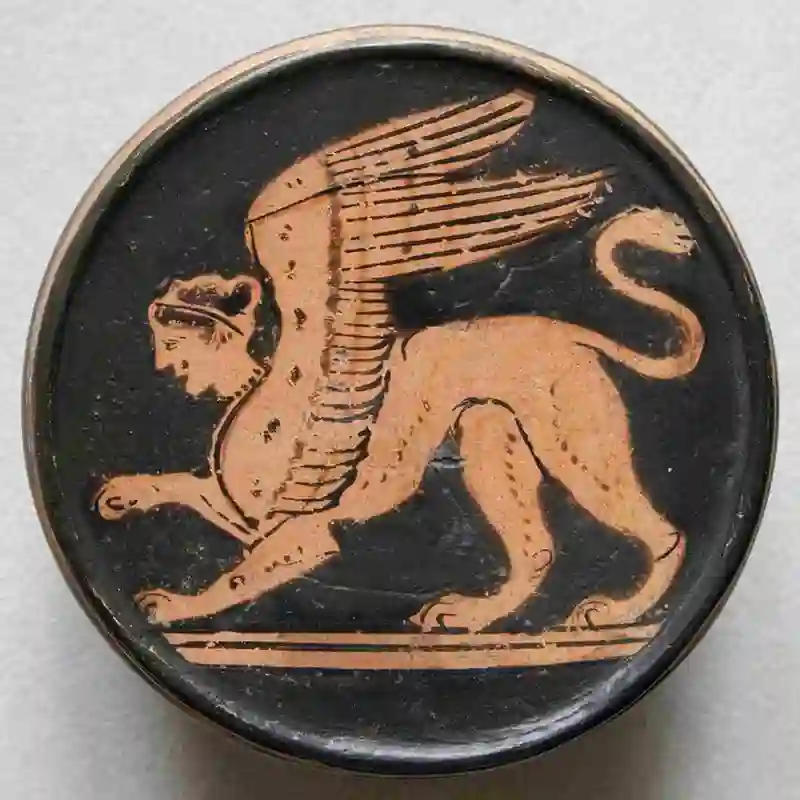
In the ancient world, the Sphinx’s role was primarily that of a guardian and a harbinger of doom. She was said to dwell near the city of Thebes, where she would pose her infamous riddle to travelers. Those who failed to answer correctly would be devoured by the Sphinx, highlighting her deadly intellect and merciless nature.
The riddle of the Sphinx, “What walks on four legs in the morning, two legs at noon, and three legs in the evening?” encapsulates the human life cycle—crawling as a baby, walking on two legs as an adult, and using a cane in old age. Similarly, the mysteries surrounding ancient artifacts, like the Nimrud Lens, continue to captivate modern scholars and enthusiasts, reflecting humanity’s enduring fascination with the unknown.
The presence of the Sphinx in Greek mythology is not merely about terror. It also reflects the Greeks’ deep appreciation for wisdom and the intellectual challenges that define human existence. The Sphinx’s riddle, therefore, serves as a metaphor for the journey of life and the pursuit of knowledge.
In addition to her lethal nature, the Sphinx is also seen as a figure that tests human wit and resilience. This aspect of her character is crucial, as it underscores the value that ancient Greeks placed on intellectual prowess. The Sphinx, through her cunning and challenges, becomes a symbol of the trials that one must overcome to gain wisdom and insight.
As we move through the annals of history, the Sphinx’s myth continues to evolve, intertwining with the tales of heroes and gods. Each iteration of her story adds layers to our understanding of this complex creature, solidifying her place as a cornerstone of Greek mythology. The legend of the Sphinx is more than a tale of fear; it is a narrative rich with symbolic meaning and cultural significance, reflecting the ancient Greek worldview and their philosophical inquiries into the nature of life and death.
The Powers of the Sphinx in Greek Mythology
The Sphinx, a creature of awe and terror, wielded formidable powers that captivated the ancient Greeks. Her most notable ability was her immense wisdom, a trait inherited from her parents, Echidna and Typhon. This wisdom was not merely theoretical but manifest in her infamous riddles, which tested the intellect and resolve of those who encountered her.
The most famous of these riddles, “What walks on four legs in the morning, two legs at noon, and three legs in the evening?” is a testament to the Sphinx’s cunning. It encapsulates the human condition, reflecting the stages of life from infancy to old age. This riddle was not just a simple puzzle but a profound metaphor for the journey of human life. The Sphinx’s victims, unable to unravel this enigma, met their tragic end, reinforcing the creature’s role as both a guardian of wisdom and a harbinger of doom.
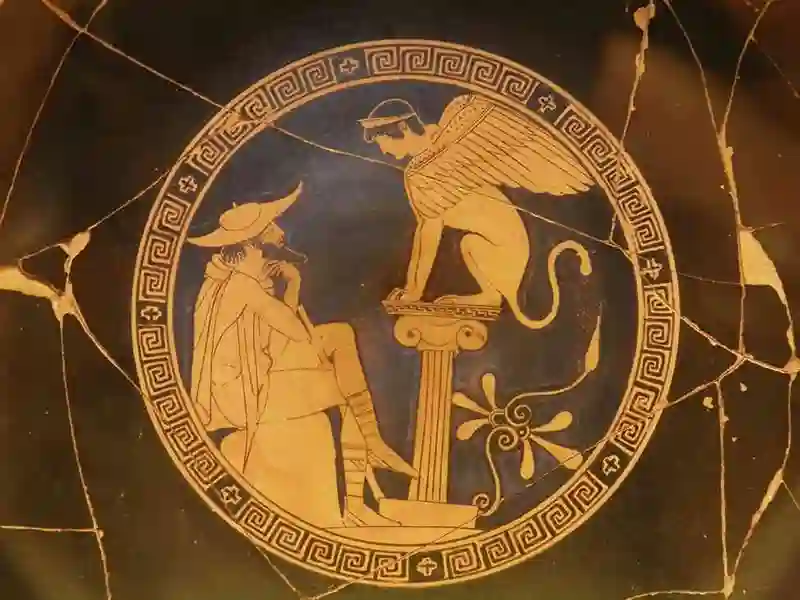
Beyond her riddles, the Sphinx possessed physical powers that made her an insurmountable adversary. Her lion’s body endowed her with great strength and agility, while her eagle’s wings allowed her to soar above the land, surveying her domain and potential victims. The human aspect of her form, a woman’s head, signified her intelligence and ability to articulate her riddles with clarity and precision.
The Sphinx’s powers were not limited to her physical attributes or intellectual challenges. She was also imbued with a mystical presence that instilled fear and reverence in those who heard her tale. In many ways, the Sphinx represented the unknown, a bridge between the mortal realm and the divine, where human understanding often faltered. This mystical aura made her a central figure in various myths and legends, as her powers transcended mere physicality and delved into the realm of the supernatural.
In Greek mythology, the Sphinx’s powers served as a reminder of the limits of human knowledge and the dangers of overstepping those bounds. Her presence near Thebes was a constant threat, a looming figure that tested the courage and intellect of all who approached. The Greeks saw in the Sphinx a complex interplay of fear, respect, and the pursuit of wisdom, a combination that made her one of the most intriguing figures in their mythological pantheon.
This interplay is vividly illustrated in the story of Oedipus, who ultimately overcame the Sphinx by solving her riddle. This victory was not just a triumph over a physical monster but a symbolic conquest of ignorance and the unknown. The defeat of the Sphinx by Oedipus marked a pivotal moment in Greek mythology, demonstrating that human intellect, when coupled with courage, could overcome even the most formidable of challenges.
As the myths evolved, the Sphinx’s powers remained a central theme, embodying the eternal struggle between knowledge and ignorance, strength and vulnerability. Her legend endures, a timeless testament to the complexities of the human condition and the enduring quest for understanding in the face of life’s greatest mysteries.
The Tale of Oedipus and the Sphinx
The tale of Oedipus and the Sphinx is one of the most renowned stories in Greek mythology, interweaving themes of fate, intellect, and tragedy. It begins with the Sphinx terrorizing the city of Thebes, a thriving city-state in ancient Greece. Positioned at the entrance to the city, the Sphinx would pose her riddle to any traveler attempting to pass. Failure to answer correctly resulted in a swift and deadly punishment, as the Sphinx would devour those who failed her test.
The city of Thebes was in a state of crisis. Many had fallen victim to the Sphinx’s riddle, and the morale of the citizens was at an all-time low. In a desperate bid to rid the city of this menace, King Laius and Queen Jocasta offered the throne of Thebes and Jocasta’s hand in marriage to anyone who could defeat the Sphinx. This is where Oedipus, a young prince of Corinth with a troubled past and an uncertain future, enters the narrative.
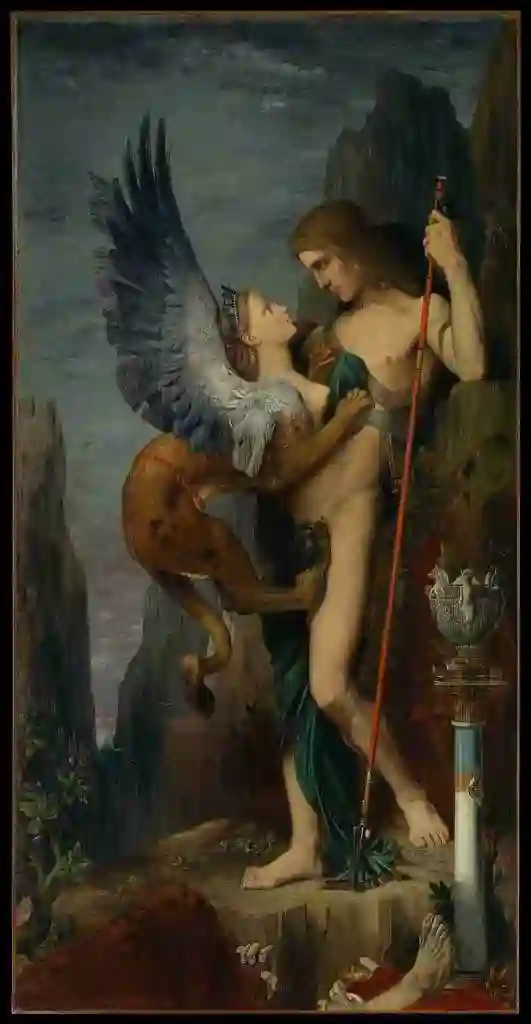
Oedipus, who had fled from his home in Corinth to avoid a prophecy that foretold he would kill his father and marry his mother, found himself journeying toward Thebes. Upon his arrival, he encountered the Sphinx and was confronted with her riddle: “What walks on four legs in the morning, two legs at noon, and three legs in the evening?” With his sharp intellect, Oedipus deduced the answer, “Man,” referring to the stages of human life from crawling as a baby, walking on two legs as an adult, to using a cane in old age.
The moment Oedipus correctly answered the riddle, the Sphinx’s reign of terror came to an abrupt end. According to the myth, the Sphinx, upon being bested, either threw herself from a high rock and perished or vanished, never to be seen again. The city of Thebes was liberated, and Oedipus was hailed as a hero. He was rewarded with the throne and married Jocasta, thus unknowingly fulfilling part of the prophecy he had tried so hard to avoid.
The tale of Oedipus and the Sphinx is not just a story of heroism but also a profound narrative about fate and knowledge. Oedipus’s victory over the Sphinx was a triumph of human intellect over brute force and cunning, symbolizing the power of knowledge and wisdom. However, the subsequent unfolding of Oedipus’s fate also serves as a poignant reminder of the inexorable nature of destiny in Greek mythology.
This story, rich with symbolism and dramatic turns, has been retold through various mediums over centuries, each time reinforcing the timeless themes of the ancient myth. The encounter between Oedipus and the Sphinx remains a cornerstone of Greek mythological tradition, illustrating the eternal human struggle against the unknown and the relentless pursuit of truth and understanding.
The encounter between Oedipus and the Sphinx remains a cornerstone of Greek mythological tradition, illustrating the eternal human struggle against the unknown and the relentless pursuit of truth and understanding.
The encounter between Oedipus and the Sphinx remains a cornerstone of Greek mythological tradition, illustrating the eternal human struggle against the unknown and the relentless pursuit of truth and understanding.
Frequently Asked Questions (FAQs)
1. What was the Sphinx in Greek mythology?
The Sphinx in Greek mythology is a mythical creature with the body of a lion, the wings of an eagle, and the head of a woman. It is known for posing riddles to travelers and killing those who cannot answer correctly.
2. Who is the Sphinx in Greek mythology?
The Sphinx is a mythical creature from Greek mythology, often depicted with the body of a lion, the wings of an eagle, and the head of a woman. She is famous for her riddle and her encounter with Oedipus.
3. Who killed the Sphinx in Greek mythology?
Oedipus is credited with defeating the Sphinx in Greek mythology by correctly answering her riddle, causing her to destroy herself.
4. What precisely does the Greek word Sphinx mean?
The Greek word “Sphinx” is believed to derive from the verb “sphingein,” meaning “to squeeze” or “to bind,” reflecting the creature’s deadly nature.
5. Who defeated the Sphinx according to Greek legend?
According to Greek legend, Oedipus defeated the Sphinx by solving her riddle, which led to her demise and ended her reign of terror over Thebes.
The Symbolism and Legacy of the Sphinx
The symbolism and legacy of the Sphinx in Greek mythology are deeply rooted in the cultural and intellectual landscape of ancient Greece. This mythical creature, with its formidable blend of human and animal traits, has come to embody a rich tapestry of meanings, resonating through the centuries.
In Greek mythology, the Sphinx symbolizes the intersection of knowledge and mystery. Her riddle, the answer to which signifies an understanding of human life, positions her as a guardian of profound wisdom. This aspect of the Sphinx underscores the ancient Greeks’ reverence for intellectual challenges and their quest for understanding the deeper truths of existence. The Sphinx, through her riddles, represents the pursuit of knowledge, a pursuit fraught with peril and requiring both courage and intellect.
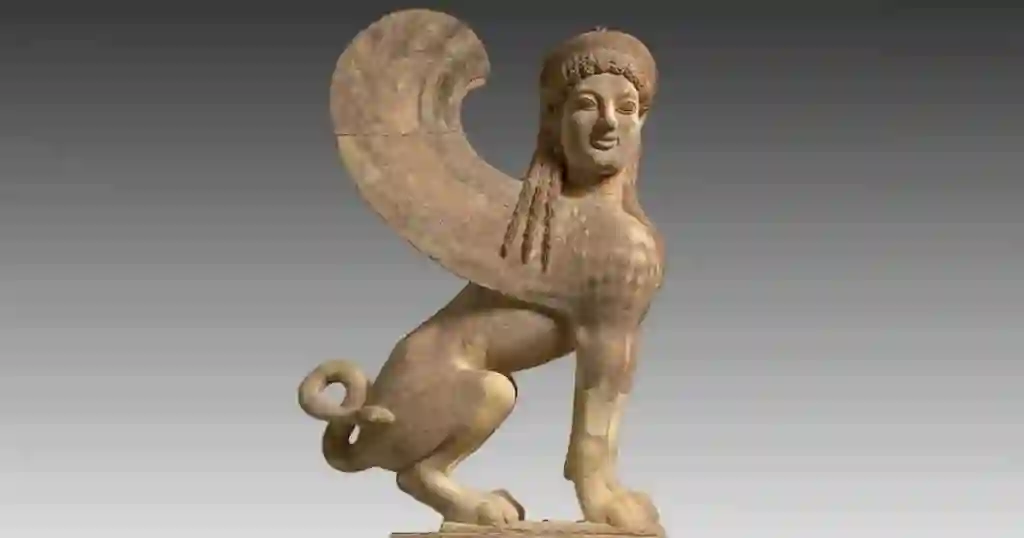
The dual nature of the Sphinx, combining the beauty and intellect of a woman with the power and ferocity of a lion, reflects the complexities and contradictions inherent in human nature. This duality can be seen as a metaphor for the balance between reason and instinct, a theme prevalent in Greek philosophical thought. By posing her riddle, the Sphinx challenges individuals to confront these dual aspects within themselves, urging them to rise above their baser instincts through the application of reason.
The legacy of the Sphinx extends beyond her role in myths and legends. In art and literature, the Sphinx has been a perennial source of inspiration. Ancient Greek pottery, sculptures, and paintings often depict the Sphinx, illustrating her significance in Greek culture. These artistic representations serve not only as a testament to her importance but also as a means of exploring and conveying complex ideas about human nature, knowledge, and the unknown.
Moreover, the influence of the Sphinx has permeated various other cultures and epochs. The most famous non-Greek Sphinx is the Great Sphinx of Giza in Egypt, which, although distinct in form and function, shares the Greek Sphinx’s aura of mystery and guardianship. This cross-cultural presence highlights the universal themes embodied by the Sphinx and her enduring appeal as a symbol of enigma and intellect.
The Sphinx’s legacy also finds echoes in modern interpretations and adaptations. In literature, theatre, and popular media, the figure of the Sphinx continues to captivate audiences, serving as a metaphor for the enigmatic and the unknowable. Her riddles and the challenges they present remain relevant, symbolizing the ongoing human quest for knowledge and self-discovery.
Mystery Uncover is your go-to resource for unraveling the mysteries of ancient civilizations, mythologies, and unexplained phenomena. Dive deep into the legends of gods like Zeus, explore the enigmatic tales of mythical creatures, and uncover the truths hidden in the shadows of history.
Through the lens of comparative mythology, the Sphinx reveals the interconnectedness of human cultures and the shared themes that resonate across time and space. Its enduring legacy invites us to reflect on the ways in which we, too, seek to understand our world, challenge our intellects, and confront the enigmatic aspects of our own existence.”
In Greek mythology, the Sphinx is more than a mere monster; she is a complex symbol of the human condition. Her presence in the myths invites contemplation and reflection on the nature of wisdom, the importance of intellectual pursuit, and the eternal dance between the known and the unknown. Through the lens of the Sphinx, we glimpse the ancient Greeks’ profound understanding of the world and their place within it, a legacy that continues to inspire and challenge us today.
The Sphinx in Comparative Mythology
The Sphinx, a symbol of mystery and intellect in Greek mythology, finds its counterparts across various cultures, each imbued with unique attributes and significance. This cross-cultural presence of the Sphinx underscores the universal themes it embodies and highlights the diverse ways different civilizations have interpreted this enigmatic creature.
In ancient Egypt, the Sphinx is perhaps most famously represented by the Great Sphinx of Giza. Unlike the Greek Sphinx, the Egyptian version typically features the body of a lion with the head of a pharaoh, often believed to be that of Pharaoh Khafre. This colossal statue, standing guard over the Giza Plateau, symbolizes strength, wisdom, and the divine authority of the pharaohs. The Egyptian Sphinx served as a protective figure, warding off evil and safeguarding the sacred spaces of the ancient Egyptians.

The Egyptian Sphinx’s primary role as a guardian contrasts with the Greek Sphinx’s more malevolent nature. While the Greek Sphinx poses riddles and brings death to those who fail her test, the Egyptian Sphinx embodies the protective and beneficent aspects of divine kingship. This difference highlights the varying cultural perceptions of similar mythological creatures, shaped by the unique religious and societal values of each civilization.
Moving eastward, the concept of the Sphinx also appears in Persian mythology. The Persian version, known as the Shirdal, combines elements of a lion and an eagle, symbolizing royalty and power. This mythological creature reflects the ancient Persians’ emphasis on strength and divine right, mirroring the protective qualities seen in the Egyptian Sphinx but with a distinct cultural flavor.
In India, a creature reminiscent of the Sphinx is found in the form of the Purushamriga or Narasimha, a lion-headed figure that appears in Hindu mythology. Narasimha, an avatar of the god Vishnu, is revered for his role in protecting the faithful and restoring cosmic order. This lion-headed deity’s function as a divine protector aligns more closely with the Egyptian interpretation than the Greek, yet it still underscores the universal appeal of the Sphinx archetype.
In European medieval art, the Sphinx re-emerges, often depicted in manuscript illuminations and architectural decorations. These representations draw heavily from classical antiquity, yet they adapt the Sphinx to fit the medieval Christian context, where it sometimes symbolizes the enigmatic nature of divine wisdom and the mysteries of faith.
The persistence of the Sphinx across cultures and epochs speaks to its powerful symbolism. Each iteration of the Sphinx, whether Greek, Egyptian, Persian, or Indian, reflects a civilization’s attempt to grapple with the unknown, to articulate the balance between knowledge and mystery, and to express the interplay between human and divine realms.
In contemporary times, the Sphinx continues to inspire and intrigue. Modern literature, art, and popular culture frequently revisit the Sphinx, drawing on its rich symbolic heritage to explore new narratives and ideas. From novels to films, the Sphinx remains a potent symbol of the quest for knowledge and the eternal human struggle to understand the mysteries of existence.
Through the lens of comparative mythology, the Sphinx reveals the interconnectedness of human cultures and the shared themes that resonate across time and space. Its enduring legacy invites us to reflect on the ways in which we, too, seek to understand our world, challenge our intellects, and confront the enigmatic aspects of our own existence.
Use of Our Content
⚠️ Content on “Mystery Uncover” is protected under US and International Copyright Laws.
You are free to reuse, republish, and share our content by giving credit to the source as Mystery Uncover with a link to the original material on mysteryuncover.com.


